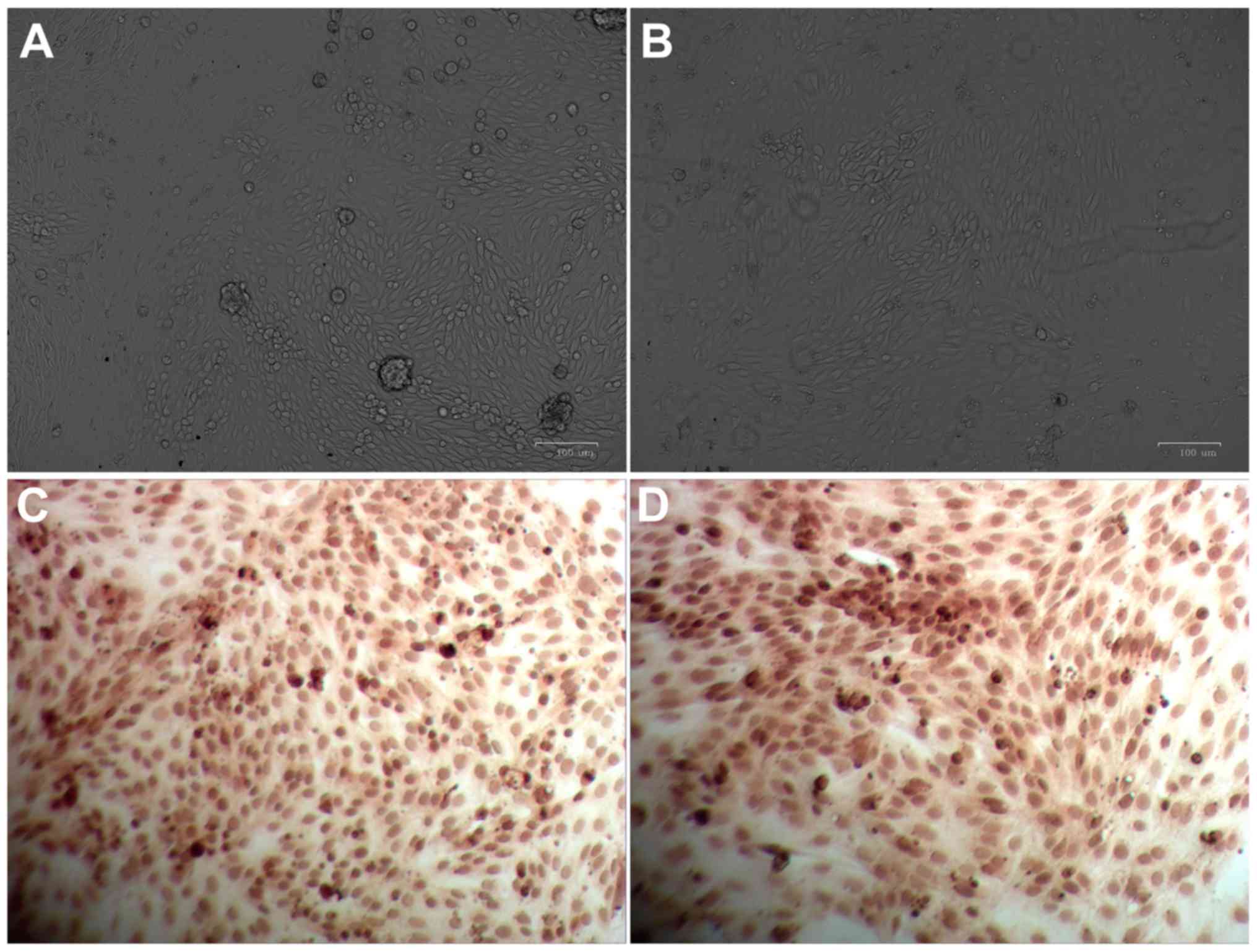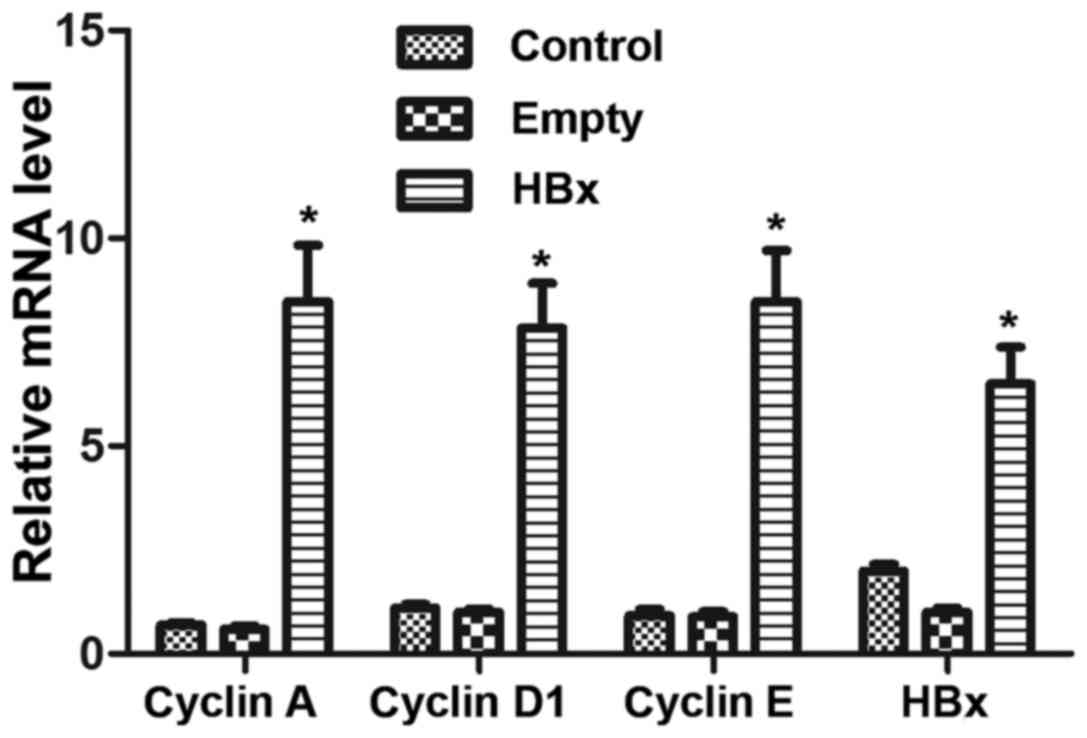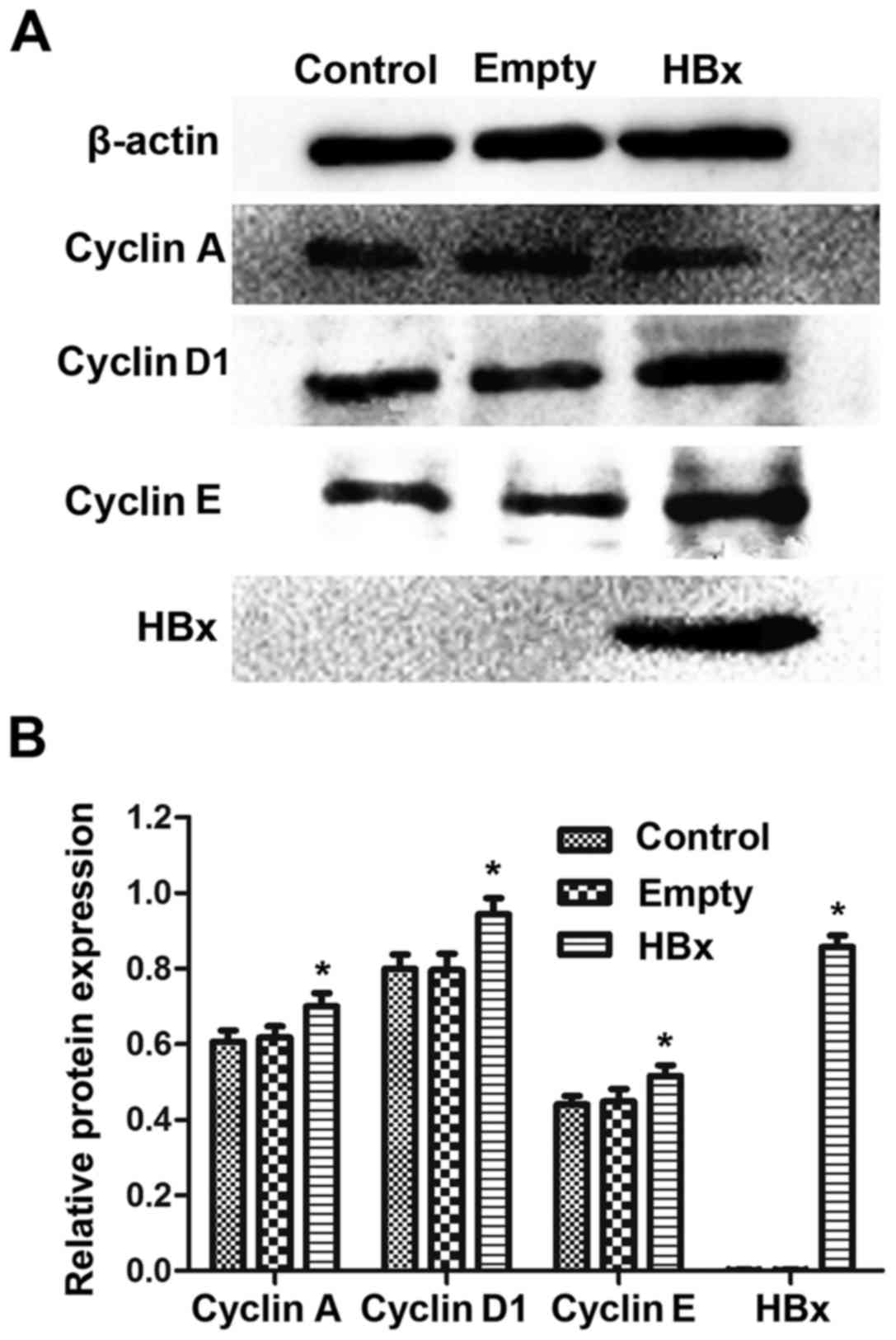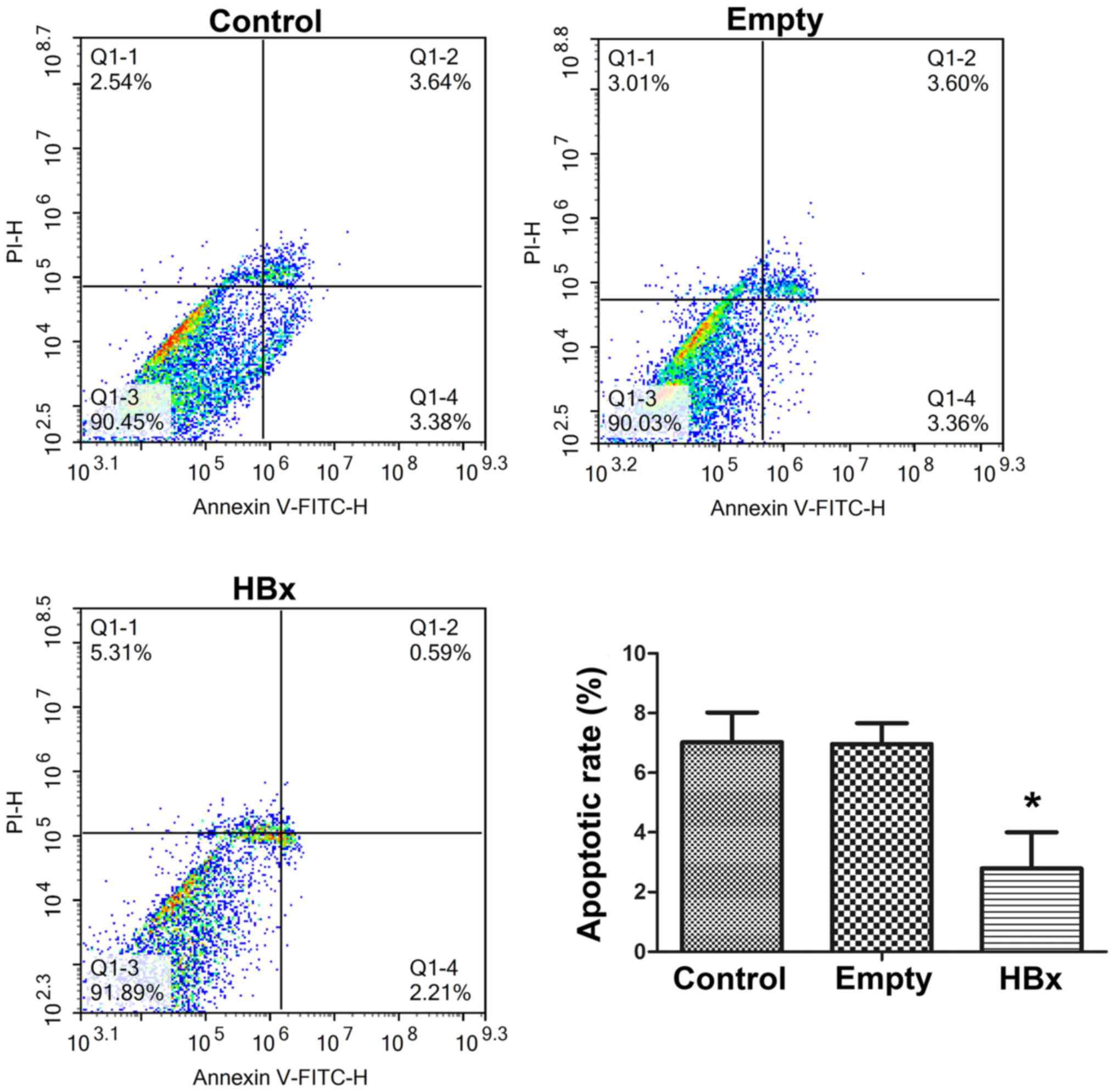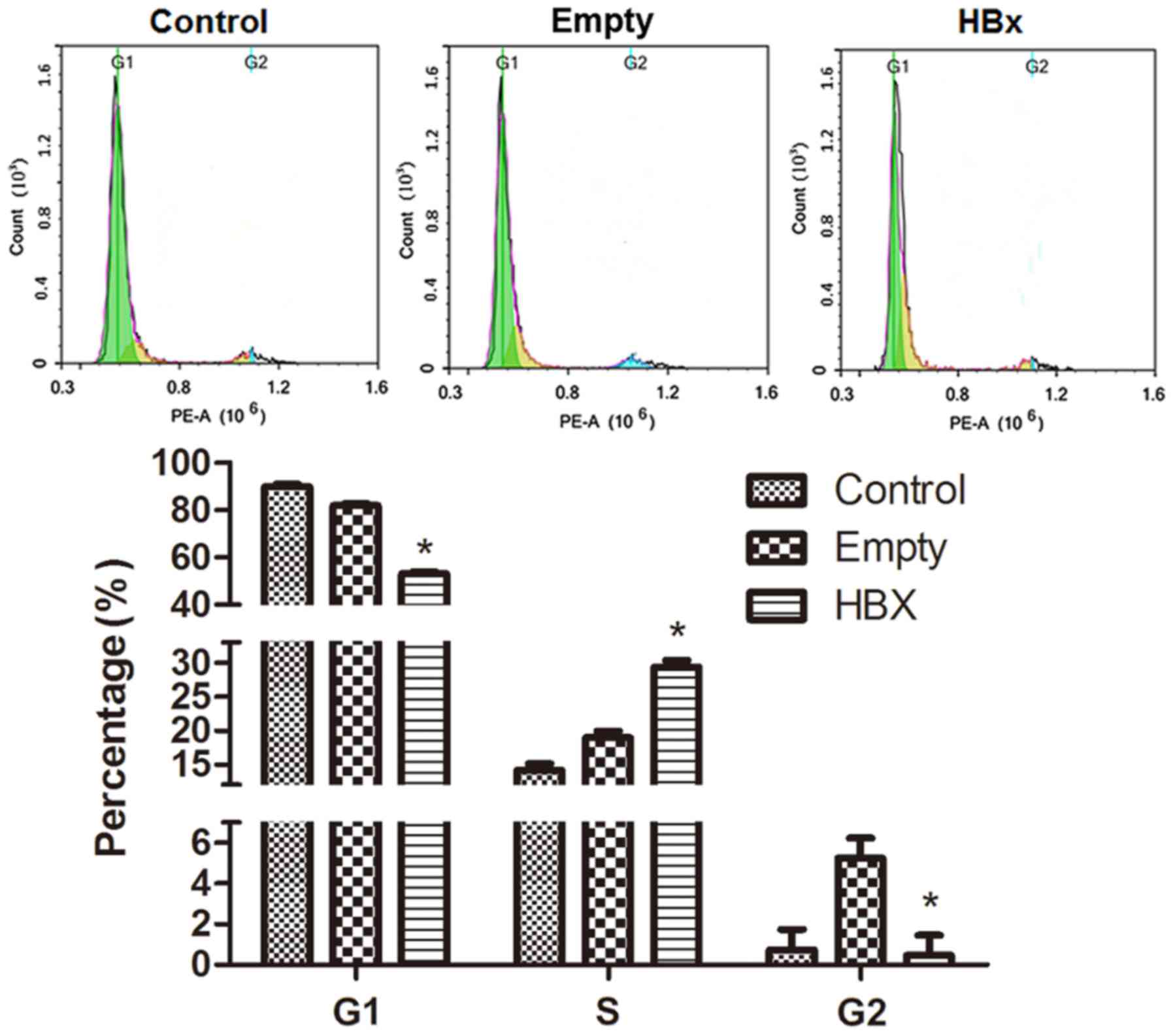|
1
|
Zhang Q and Xue C: Research progress in
pathogenesis of hepatitis B virus associated nephritis. Med Recap.
2543–2545. 2013.
|
|
2
|
Yi Z, Jie YW and Nan Z: The efficacy of
anti-viral therapy on hepatitis B virus-associated
glomerulonephritis: A systematic review and meta-analysis. Ann
Hepatol. 10:165–173. 2011.PubMed/NCBI
|
|
3
|
Seeger C and Mason WS: Hepatitis B virus
biology. Microb Mol Biol Rev. 64:51–68. 2000. View Article : Google Scholar
|
|
4
|
Zhai LL, Liu J and Xie YH: Dose-dependent
modulation of cell apoptosis by hepatitis B virus X protein. J
Microb Infect. 72–77. 2011.
|
|
5
|
Xia LM, Huang WJ, Wu JG, Yang YB, Zhang Q,
Zhou ZZ, Zhu HF, Lei P, Shen GX and Tian DA: HBx protein induces
expression of MIG and increases migration of leukocytes through
activation of NF-kappa B. Virology. 385:335–342. 2009. View Article : Google Scholar : PubMed/NCBI
|
|
6
|
Clippinger AJ, Gearhart TL and Bouchard
MJ: Hepatitis B virus X protein modulates apoptosis in primary rat
hepatocytes by regulating both NF-kappa B and the mitochondrial
permeability transition pore. J Virology. 83:4718–4731. 2009.
View Article : Google Scholar : PubMed/NCBI
|
|
7
|
Tan C, Guo H, Zheng M, Chen Y and Huang W:
Involvement of mitochondrial permeability transition in hepatitis B
virus replication. Virus Res. 145:307–311. 2009. View Article : Google Scholar : PubMed/NCBI
|
|
8
|
He P, Shang H, Li D and Feng G: Effects of
HBx gene on proliferation and apoptosis of human renal tubular
epithelial cells. Chin J Nephrol. 29:380–381. 2013.
|
|
9
|
Chen HY, Tang NH, Lin N, Chen ZX and Wang
XZ: Hepatitis B virus X protein induces apoptosis and cell cycle
deregulation through interfering with DNA repair and checkpoint
responses. Hepatol Res. 38:174–182. 2008.PubMed/NCBI
|
|
10
|
Huang YQ, Wang LW, Yan SN and Gong ZJ:
Effects of cell cycle on telomerase activity and on hepatitis B
virus replication in HepG22.2.15 cells. Hepatobiliary Pancreat Dis
Int. 3:543–547. 2006.
|
|
11
|
General Administration of Quality
Supervision, Inspection and Quarantine of China: Laboratory
animal-Guideline of welfare ethical review (Draft for approval).
Mar 18–2017.
|
|
12
|
Ono Y, Onda H, Sasada R, Igarashi K,
Sugino Y and Nishioka K: The complete nucleotide sequences of the
cloned hepatitis B virus DNA; subtype adr and adw. Nucleic Acids
Res. 11:1747–1757. 1983. View Article : Google Scholar : PubMed/NCBI
|
|
13
|
Livak KJ and Schmittgen TD: Analysis of
relative gene expression data using real-time quantitative PCR and
the 2(-Delta Delta C (T)) method. Methods. 25:402–408. 2001.
View Article : Google Scholar : PubMed/NCBI
|
|
14
|
He P, Li H, Li D and Feng G: HBx gene
promotes apoptosis in HK-2 cells through regulating
apoptosis-relatedprotein ratio of Bax/Bcl-2. J Chin Med Univer.
43:38–44. 2014.
|
|
15
|
An S, Zhang R, Yang W, Zhou H, Zhang Z,
Yang Y and Guo X: Research advances in hepatitis B virus-associated
glomerulonephritis. J Clin Hepatol. 32:366–369. 2016.
|
|
16
|
Jiang W, Xu Y, Guan G, Ma R and Dong H:
Renal amyloidosis and hepatitis B virus-associated
glomerulonephritis in a patient with nephrotic syndrome. Chin Med J
(Engl). 127:11992014.PubMed/NCBI
|
|
17
|
Deng CL, Song XW, Liang HJ, Feng C, Sheng
YJ and Wang MY: Chronic hepatitis B serum promotes apoptotic damage
in human renal tubular cells. World J Gastroenterol. 12:1752–1756.
2006. View Article : Google Scholar : PubMed/NCBI
|
|
18
|
Zhu N, Zhou Y, Yuan WJ, Liu J, Shang MH,
Wang L and Gu LJ: Toll-like receptor 4 deposition and its
significance in hepatitis B virus associated nephropathy. Zhonghua
Nei Ke Za Zhi. 50:1008–1012. 2011.(In Chinese). PubMed/NCBI
|
|
19
|
Han WL and Huang ZX: Experimental study of
direct pathogenic effects of hepatitis B virus on human tubular
kidney cell. J Wenzhou Med College. 38:144–147. 2008.
|
|
20
|
Han WL and Huang ZX: Infection of
hepatitis B virus on human tubular kidney cells in vitro. J
Zhejiang Med Univer. 32:1148–1150. 2010.
|
|
21
|
Hong L, Zhang J, Li Q, Min J, Lu J, Li F,
Li H and Guo S: Role of NF-κB activiation by MHBst167/HBx in human
renal tubular cells. Chin J Nephrol Dial Transplant. 19:135–141.
2010.
|
|
22
|
Hong L, Zhang J, Min J, Lu J, Li F, Li H,
Guo S and Li Q: A role for MHBst167/HBx in hepatitis B
virus-induced renal tubular cell apoptosis. Nephrol Dial
Transplant. 25:2125–2133. 2010. View Article : Google Scholar : PubMed/NCBI
|
|
23
|
Zhou Y, Wang X, Yuan W and Zhu N: Effect
of hepatitis B virus X gene on transdifferentiation of human
proximal tubular epithelial cells. Chin J Nephrol. 28:956–960.
2012.
|
|
24
|
Zhou Y, Zhu N, Wang X, Wang L, Gu LJ and
Yuan WJ: The role of the toll-like receptor TLR4 in hepatitis B
virus-associated glomerulonephritis. Arch Virol. 158:425–433. 2013.
View Article : Google Scholar : PubMed/NCBI
|
|
25
|
Marshall CB and Shankland SJ: Cell cycle
regulatory proteins in podocyte health and disease. Nephron Exp
Nephrol. 106:e51–e59. 2007. View Article : Google Scholar : PubMed/NCBI
|
|
26
|
Madden CR and Slagle BL: Stimulation of
cellular proliferation by hepatitis B virus X protein. Dis Markers.
17:153–157. 2001. View Article : Google Scholar : PubMed/NCBI
|
|
27
|
Zhan SD and Huang JX: Progression of
Cyclin A, PTEN, Survivin and p27 expression in esophageal cancer. J
Modern Oncol. 2245–2248. 2014.
|
|
28
|
Li YJ and Li YY: Advances in the research
of cyclin E and p27 in gynecological. Foreign Med Sci (Obstet
Gynecol Fascicle). 177–180. 2007.
|
|
29
|
Lin T: Expression and significance of Cell
cycle regulatory proteins in the hepatitis B virus associated
nephritsFujian Med Univer. Fuzhou: pp. 522011
|
|
30
|
Wu RS: Cell cycle regulation of p16, cdk4
and its role in the formation of middle ear cholesteatoma. J Basic
Med Shandong Univer. 53–55. 2004.
|
|
31
|
Lu HZ, Liu D and Zhou JH: Effects of HBV X
protein on glomerular mesangial cell proliferation and
proinflammation factor expression. Chongqing Med. 40:2227–2230.
2011.
|
|
32
|
Matsuda Y and Ichida T: Impact of
hepatitis B virus X protein on the DNA damage response during
hepatocarcinogenesis. J Med Mol Morphol. 42:138–142. 2009.
View Article : Google Scholar
|
|
33
|
Park SG, Min JY, Chung C, Hsieh A and Jung
G: Tumor suppressor protein p53 induces degradation of the
oncogenic protein HBx. Cancer Lett. 282:229–237. 2009. View Article : Google Scholar : PubMed/NCBI
|
|
34
|
Bouehard MJ and Sehneider RJ: The
enigmatic X gene of hepatitis B virus. J Virol. 78:12725–12734.
2004. View Article : Google Scholar : PubMed/NCBI
|



